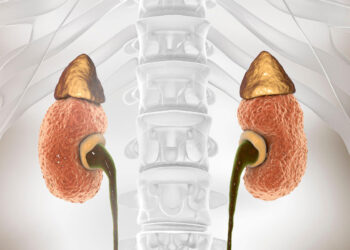TOPLINE:
Severe deficiency of vitamin D (< 25 nmol/L) has been associated with a significantly increased risk for cataracts, particularly in people younger than 50 years.
METHODOLOGY:
- Researchers examined cross-sectional and longitudinal associations between serum levels of 25-hydroxyvitamin D and the risk for cataracts, using data from the UK Biobank.
- The cross-sectional analysis included 442,255 participants with data on serum levels of vitamin D; among them, 427,923 participants (mean age, 56.2 years; 53.6% women) without cataracts at baseline were followed up for an average duration of 10.8 years in the longitudinal analysis.
- Based on serum levels of vitamin D at baseline, participants were categorized into those with severe deficiency (< 25 nmol/L), moderate deficiency (25-49.9 nmol/L), insufficiency (50-74.9 nmol/L), or sufficiency (≥ 75 nmol/L).
- Cases of cataracts were confirmed from hospital records and self-reported information.
TAKEAWAY:
- Of the 442,255 participants in the cross-sectional analysis, 3.24% had cataracts, and of the 427,923 participants in the longitudinal analysis, 13.02% developed the condition.
- In cross-sectional analyses, individuals with vitamin D levels < 25 nmol/L had a 12% higher risk for cataracts than those with levels ranging from 50 to 74.9 nmol/L (adjusted hazard ratio [aHR], 1.12; 95% CI, 1.04-1.21).
- In the longitudinal analysis, participants with vitamin D levels below 25 nmol/L had an 11% higher risk of developing cataracts than those with levels of 50-74.9 nmol/L (aHR, 1.11; 95% CI, 1.07-1.15); the risk was even greater among people younger than 50 years (aHR, 1.27; 95% CI, 1.07-1.49), whereas those aged 60 years or older had a 9% increased risk (aHR, 1.09; 95% CI, 1.04-1.14).
IN PRACTICE:
“The study identified significant cross-sectional and prospective associations between vitamin D deficiency and increased cataract risk, with younger individuals being more susceptible,” the researchers reported. “These findings suggest a potential critical period in early adulthood when vitamin D supplementation may be most effective for cataract prevention, warranting further investigation into age-specific intervention strategies,” they added.
SOURCE:
This study was led by Yu Peng and Yuzhou Zhang, of the Chinese University of Hong Kong, Hong Kong, China. It was published online on August 18, 2025, in the British Journal of Ophthalmology.
LIMITATIONS:
Not all cases of cataract may have been identified in this study. This study relied on baseline measurement of vitamin D levels, which did not account for variations during the follow-up period. The findings may not be generalizable to other populations as nearly 95% of participants in the UK Biobank were of White ethnicity.
DISCLOSURES:
This study was supported partly by the General Research Fund, Research Grants Council, Hong Kong; Collaborative Research Fund; Health and Medical Research Fund, Hong Kong; and other sources. The authors declared no conflicts of interest.
This article was created using several editorial tools, including AI, as part of the process. Human editors reviewed this content before publication.
Source link : https://www.medscape.com/viewarticle/vitamin-d-deficiency-tied-cataract-risk-young-adults-2025a1000m3n?src=rss
Author :
Publish date : 2025-08-21 09:35:00
Copyright for syndicated content belongs to the linked Source.









